Light pours into the Bowes Art & Architecture Library from its floor-to-ceiling windows and its oculus, which opens to the sky above and to the courtyard below.
Throughout the day, sun slipping through the oculus casts ever-changing shadows across the slate carpet. It’s a daily light show that delights Rachel Grace Newman, who recently earned a PhD in art history at Stanford.
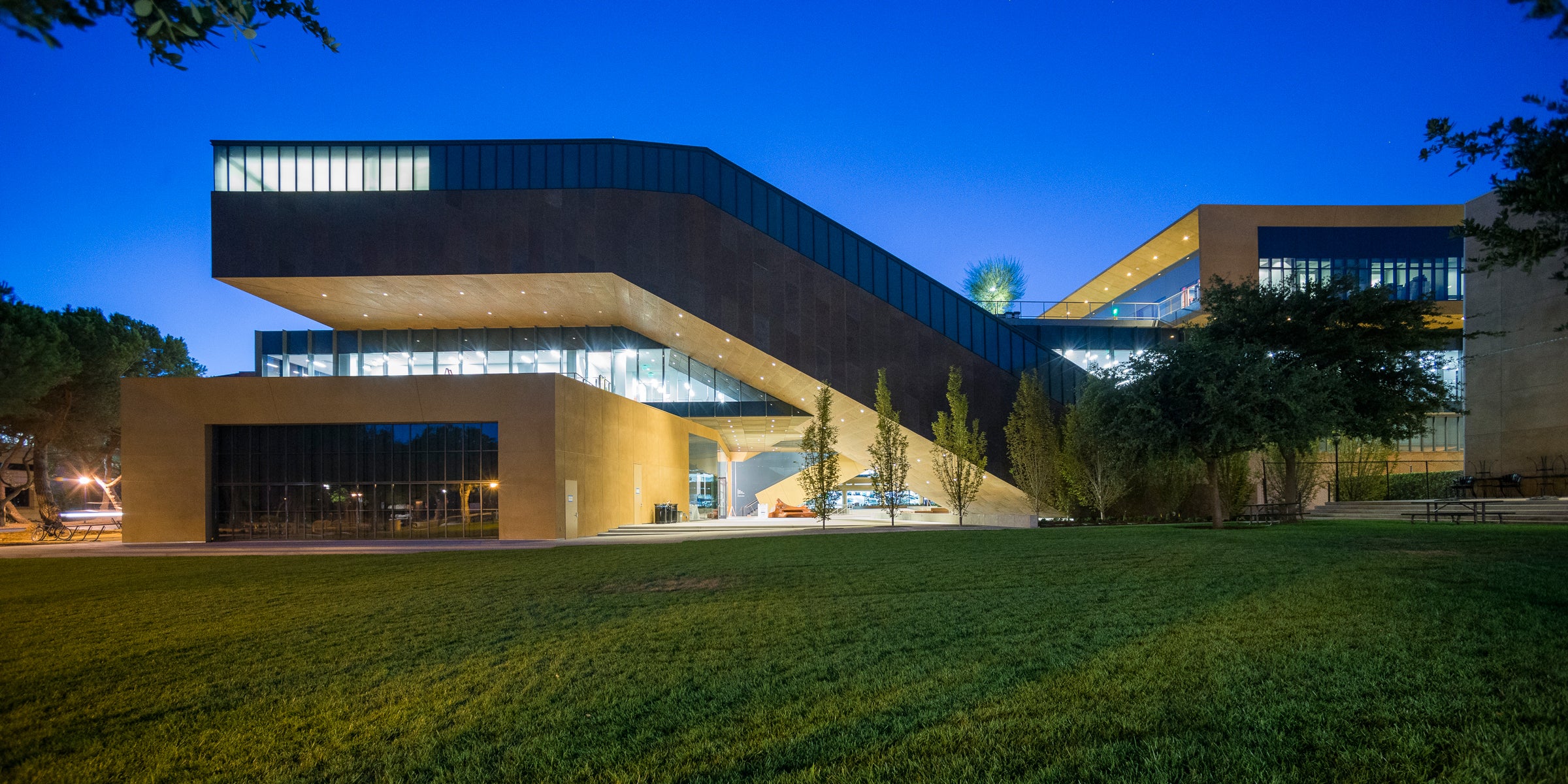
The Bowes Library, which is “suspended” in the middle of the new McMurtry Building for the Department of Art & Art History, takes up the entire second floor of the building, befitting its starring role in the study and practice of art at Stanford. Architect Charles Renfro said the two strands of the building – one for making art and another for studying art – hold the library in a “gentle embrace.”
“The location of the library, its integration into the circular architectural space, beckons its use,” said Lukas Felzmann, an art lecturer at Stanford. “It has already become a space that I frequent, treasure and integrate into my teaching practice.”
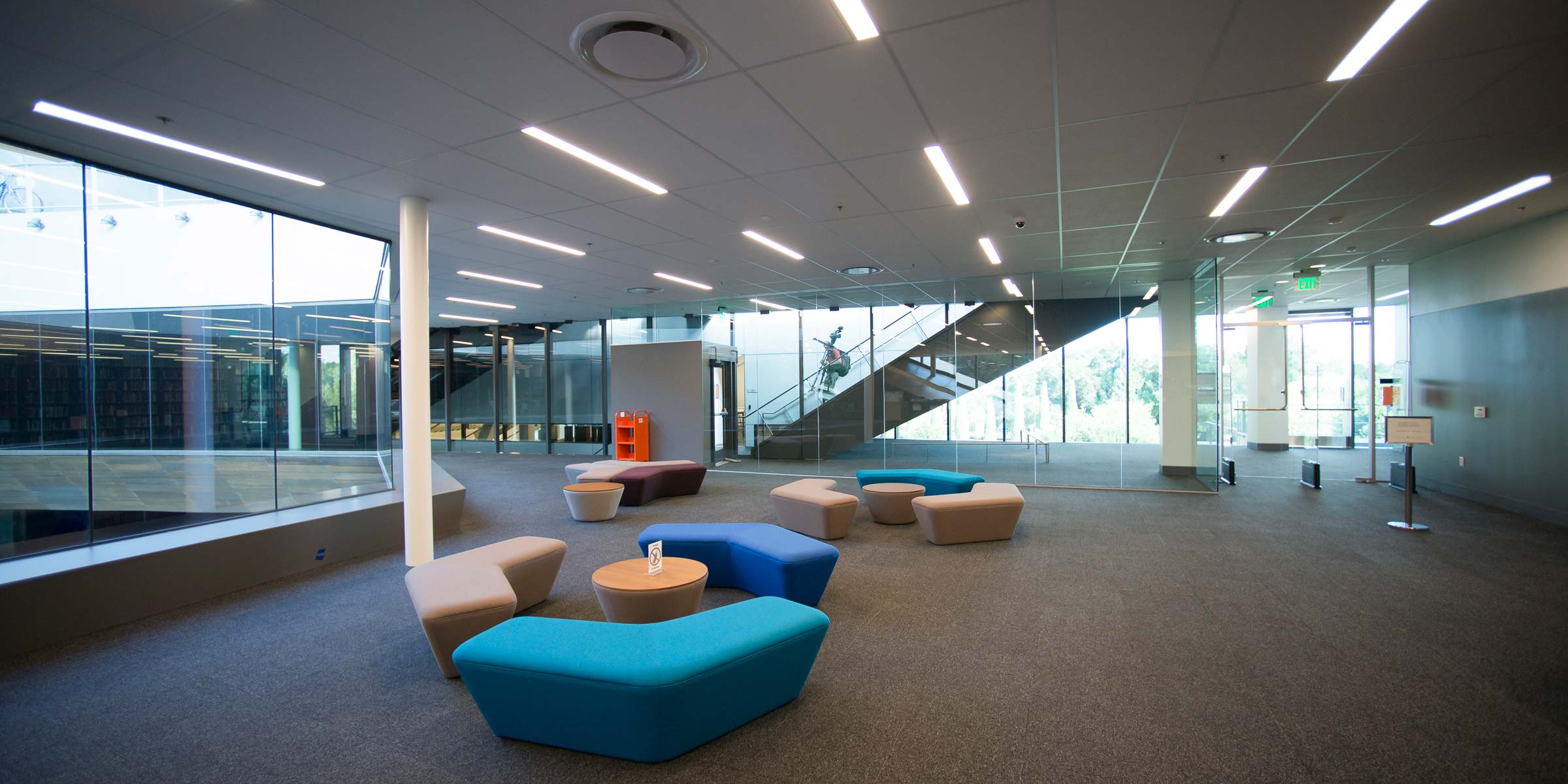
Most libraries have only one door. The Bowes Library has two. When visitors enter through the east door, near the elevators, they can “touch down” for a moment on an upholstered bench before continuing their journey in the library.
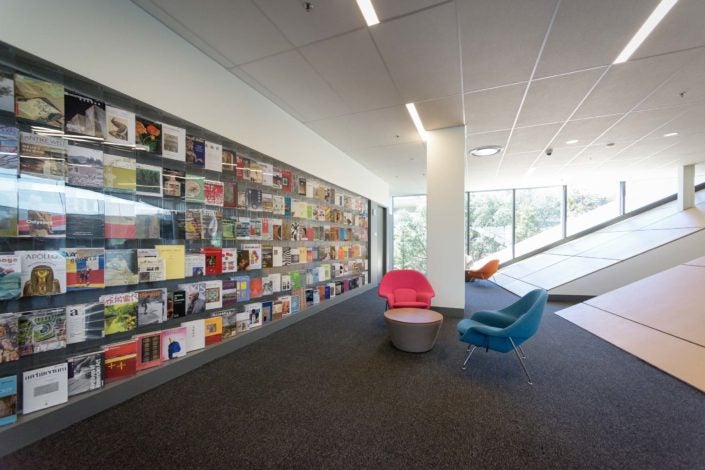
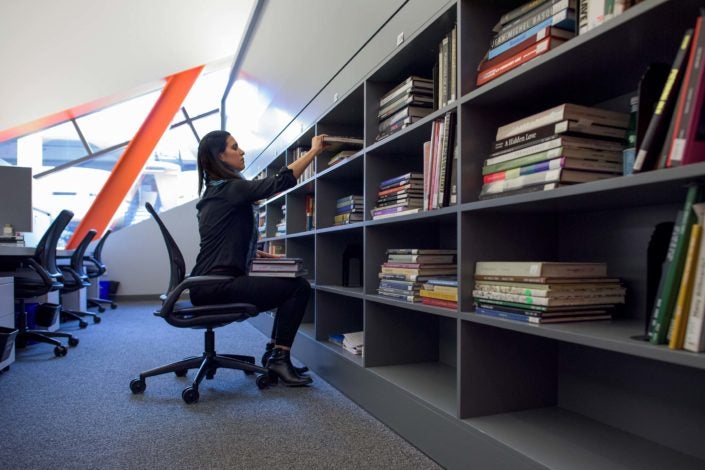
Bowes has turned its periodical collection into a vivid and ever-changing mosaic composed of 180 journals – six down and 30 across – from around the nation and around the world, including Asian Art News, Canadian Art, Frieze, Journal of Contemporary African Art, Storia dell’arte, The Comics Journal, Winterthur Portfolio and Zograf.
An entryway in a steeply sloped wall leads to the graduate carrel room, whose carrels are arrayed on five tiers. Each carrel has two bookcases and a desk with locking cabinet doors that can double as privacy dividers.
“What I love about the tiered design of the carrels is that when you’re here reading for hours on end you can hear that other people are here, which is nice, but you can’t see them,” said Alexandria Brown-Hedjazi, a PhD student in art history. “It provides a sense of community without being too distracting.”
Brown-Hedjazi also appreciates the fact that each carrel has two bookcases.
“Depending on how many classes I take, I might check out 100 books a quarter,” she said. “Plus, if you’re working on your dissertation you’re starting to hunt and collect books for your research. Having this much space for books is fantastic.”
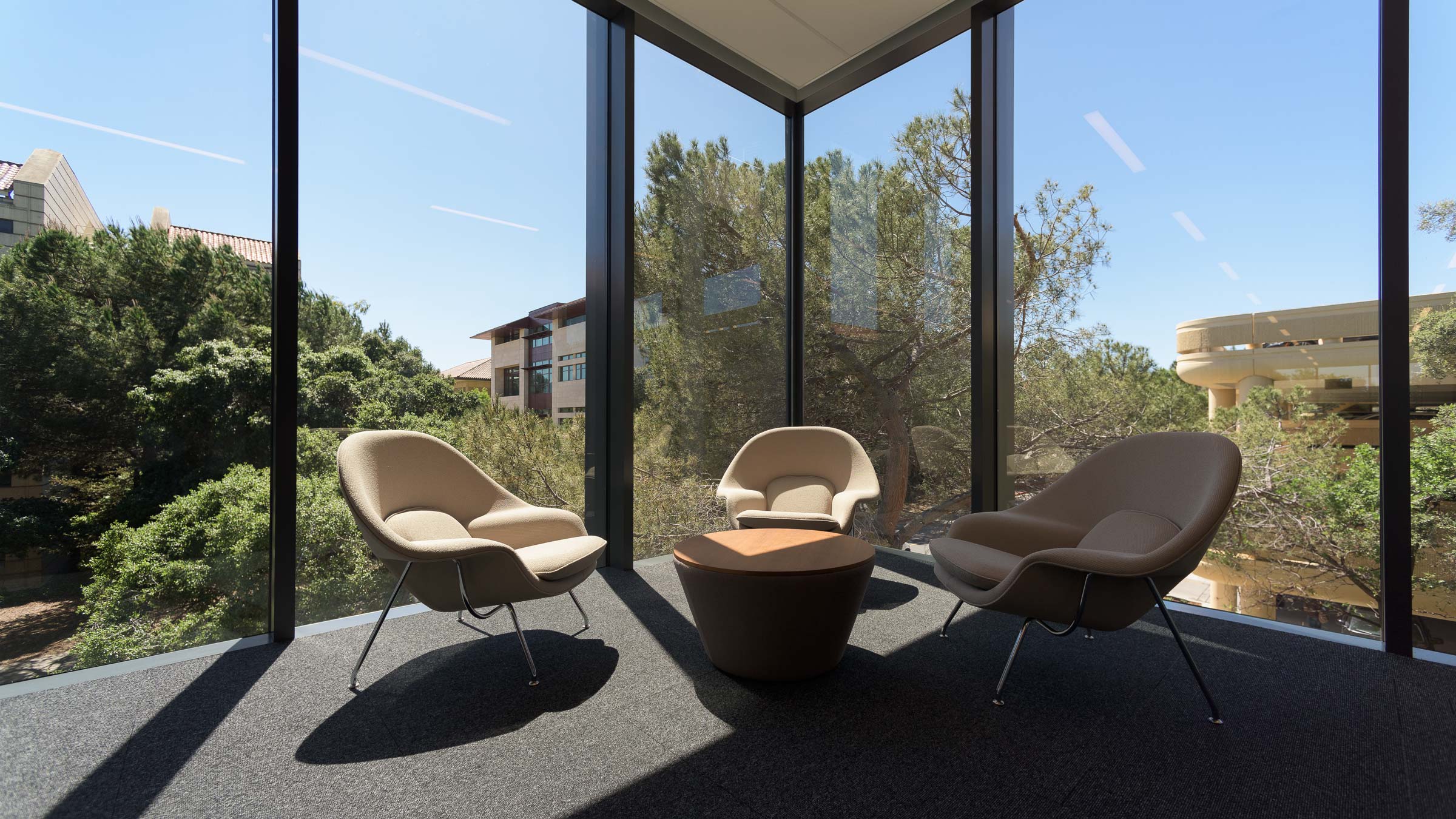
“What I love about Bowes Library is the feeling of being up in the trees as you study – particularly when you sit at the tables overlooking Roth Way,” said Alexander Nemerov, a scholar of American art and the chair of the Department of Art & Art History.
“Trees and thoughts go together; the students there, and me, too, are alone with our thoughts, away from the street, and the mind branches like the trees do. The feeling of being off the ground – of being levitated, even among all those heavy, heavy books – is something I love about Bowes.”
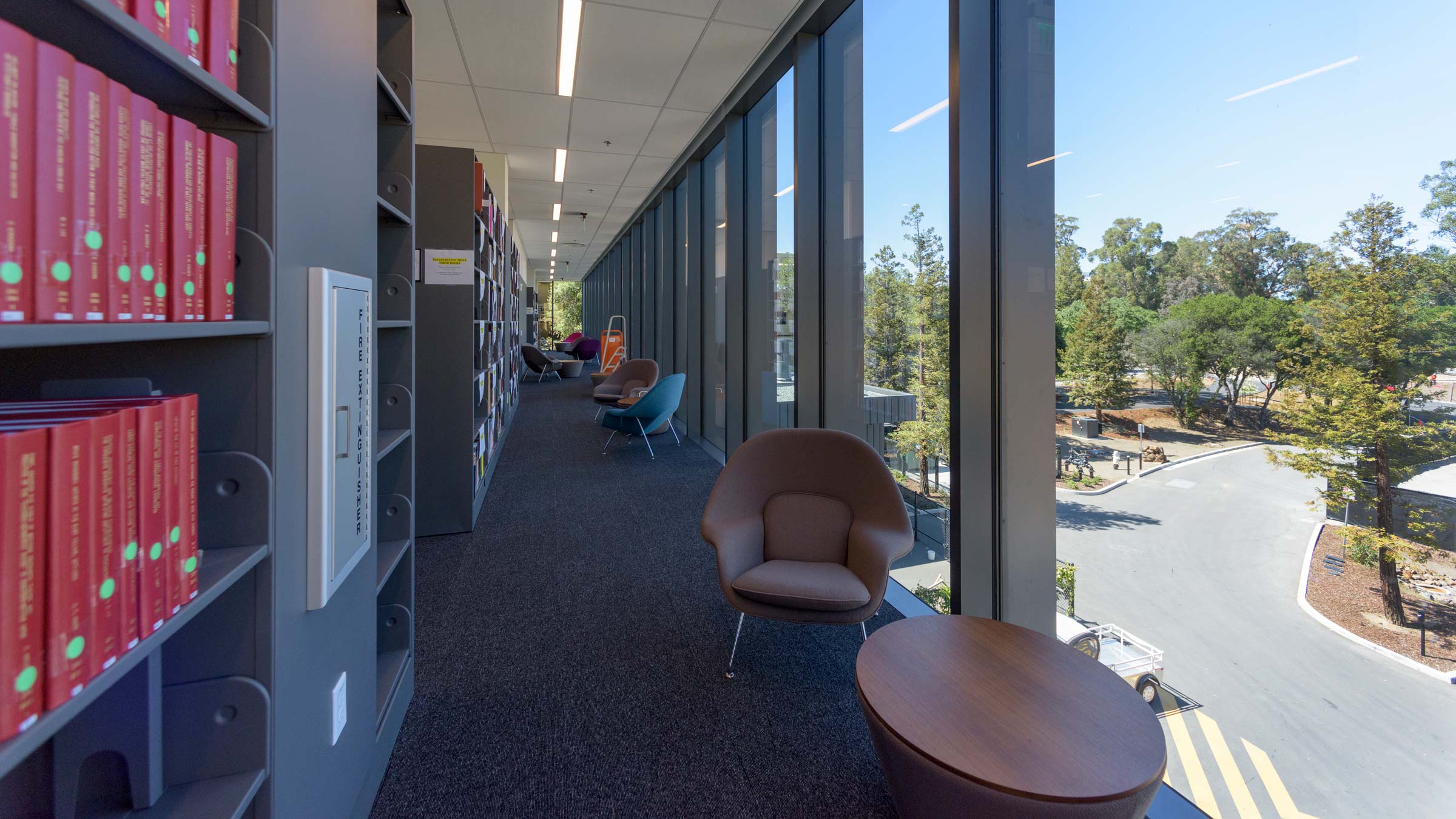
Peter Blank, senior librarian at Bowes, said the collection’s strengths reflect the curricula of the Art & Art History Department, which has consistently taught courses in photography, Chinese art, American art, Byzantine and Medieval art, and modern and contemporary art.
“We also acquire materials that we know that undeclared freshmen and sophomores are likely to use when they are doing research and writing papers for courses in the Program in Writing and Rhetoric, and for ITALIC, a yearlong academic program focused on art for freshmen who live together and take classes together in Stern Hall,” Blank said.
“But what distinguishes the Bowes collection and makes our students’ experiences especially unique is our in-house special collections operation, whose holdings enhance research and teaching on a broad range of topics. We have an excellent collection of illuminated manuscript facsimiles that are used extensively in the Byzantine and Medieval courses, and very strong holdings of out-of-print and collectible photo books.”
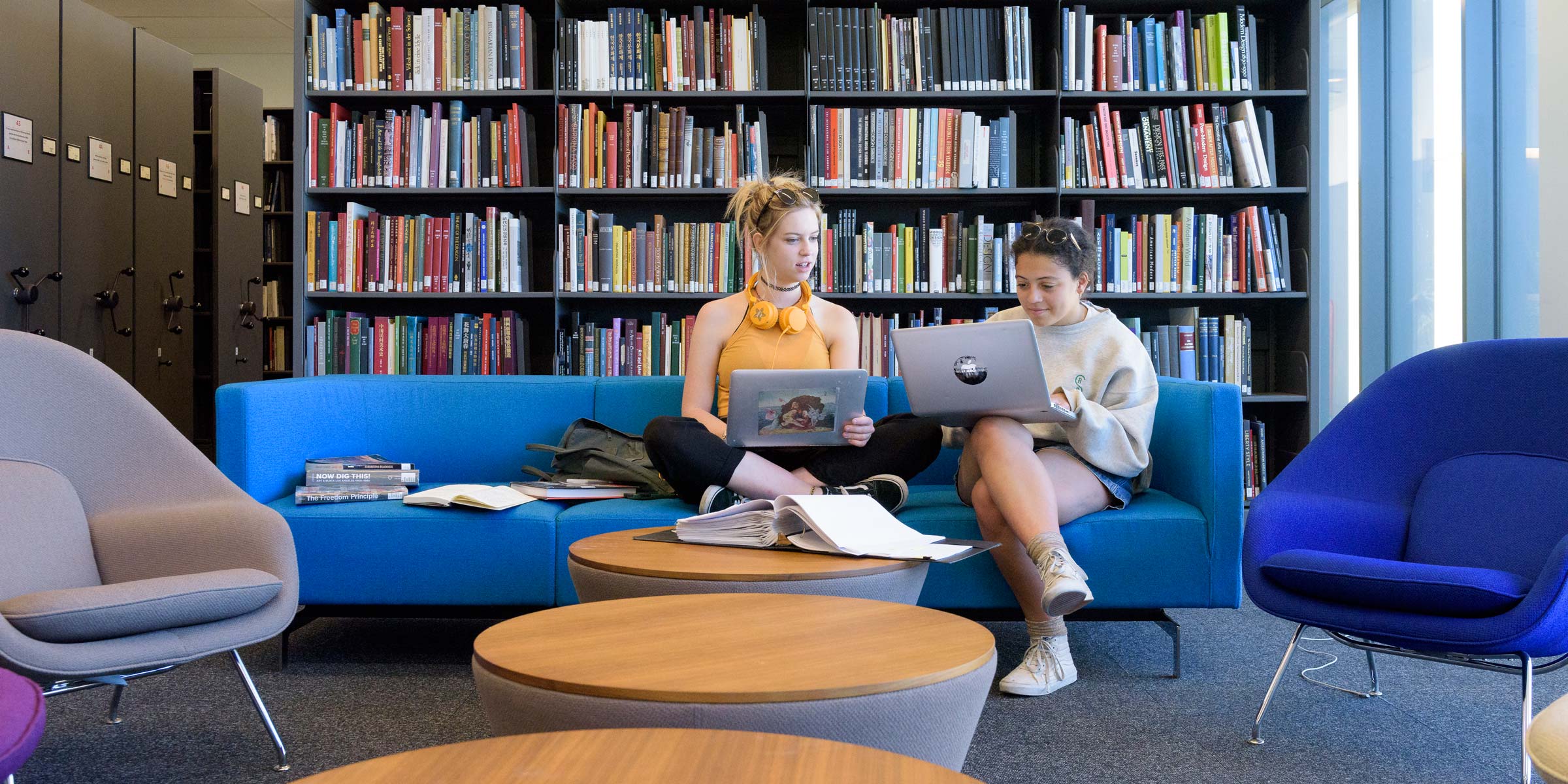
One recent day, Clara Galperin (left) and Josie Hodson – both juniors – claimed a wide blue couch, located in a cozy nook in the open stacks, to put the finishing touches on their honors thesis proposals. Galperin, an art history major, has titled her thesis Xul Solar and Jorge Luis Borges: The Art of Friendship. Hodson, who is majoring in art and art history, and in African & African American Studies, has titled her thesis: Black Alternative Art Spaces in New York City, 1963 – 1985.
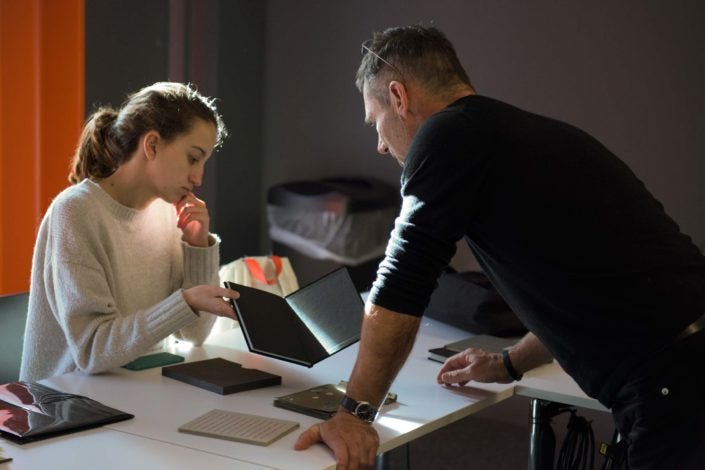
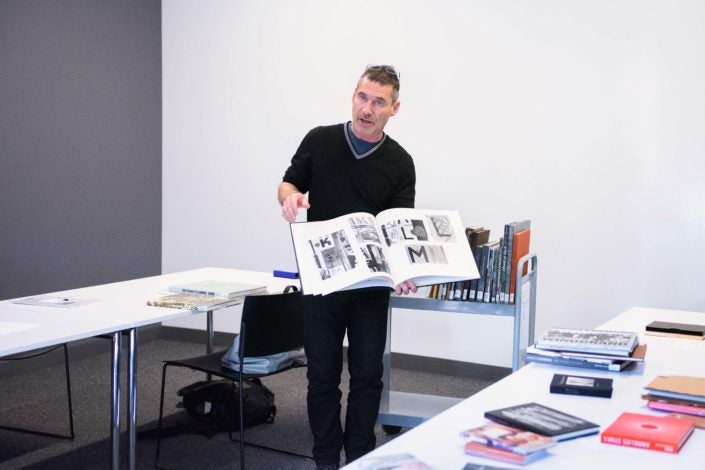
In a classroom on the top floor of the McMurtry Building, Sofia Arimany (left), a Stanford junior, discussed the design of a photo book with Lukas Felzmann, art lecturer. Felzmann selected the book, Höhlen, by Christoph Bühler, from his personal collection to show to students enrolled in his course, “The Photographic Book.”
“We were discussing its black velvet cover and the fact that it gave off an air of mystery,” said Arimany, who is majoring in psychology, with minors in art practice, and in film and media studies. “The book came in a narrow black slipcase and contained black and white photos of caves, without any explanatory text. I really liked the feel of the velvet and its alluring effect.”
Felzmann used a metal cart to wheel dozens of books to the classroom, located one floor above Bowes Library, including Letters from the People, by Lee Friedlander.
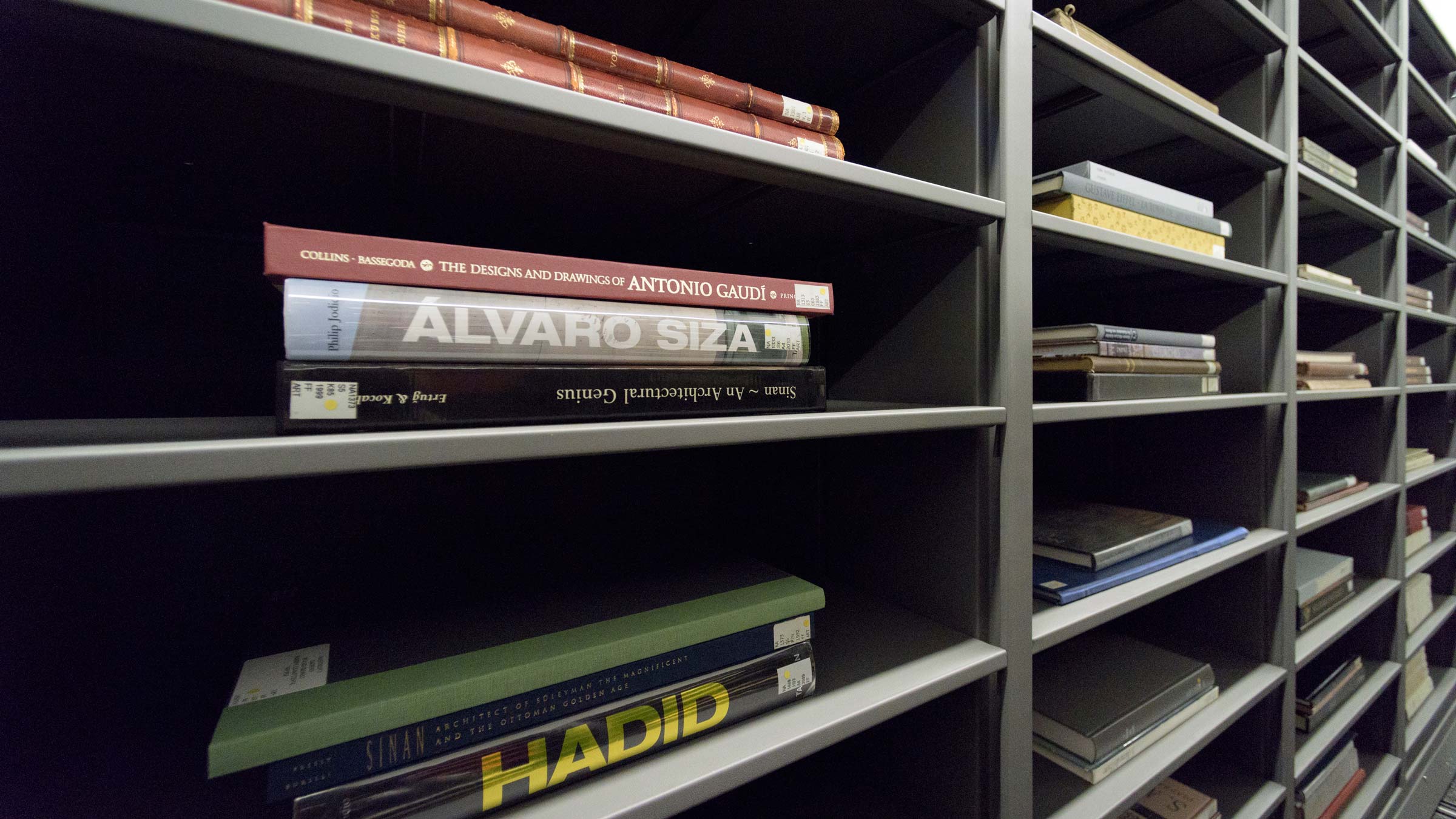
The Bowes Library has more than 150,000 volumes, including surveys and focused studies on all aspects of the history and practice of art, architecture and design, monographs on artists, exhibition catalogs, edited collections of scholarly essays, journals, rare and antiquarian materials, and even individual works of art known as artists’ books – scrolls, foldouts, concertinas, bound books or with loose items or prints contained in an enclosure.
Blank said that more than 90 percent of the new books he buys for Bowes are available only in print form. He doesn’t expect that to change anytime soon.
“That’s one reason I was so glad we were able to design a library with a substantial footprint for a visible collection,” he said. “We were able to move the entire Cummings collection into the new Bowes Library, with some modest room for expansion.”
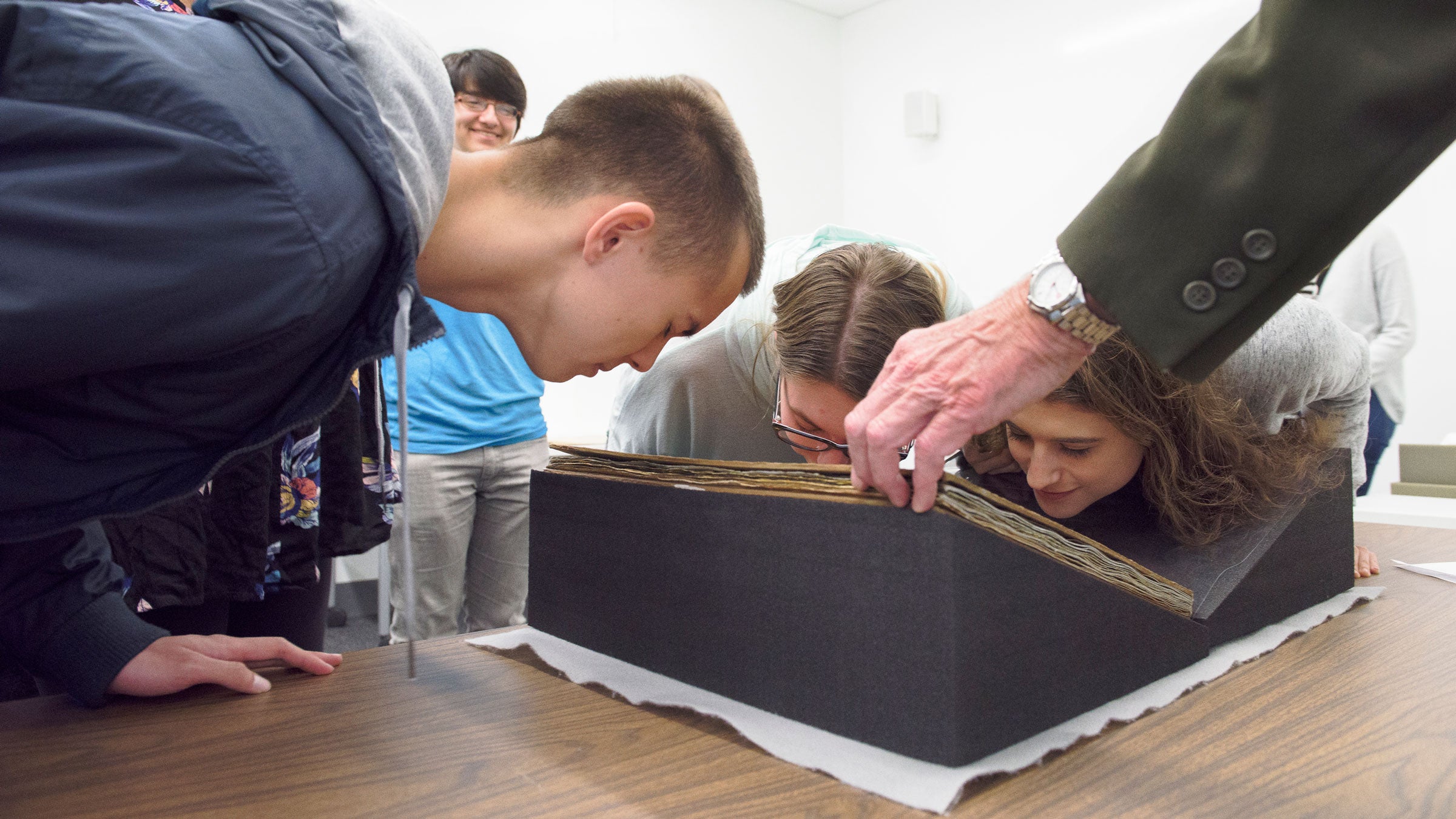
Treasures of every size and shape reside in the library’s special collections room – until students summon them from their shelves to peruse at a table near the library’s main desk, or faculty request them for special class showings in one of the library’s seminar rooms.
Students enrolled in “Digital Printmaking,” taught by Gail Wight, an associate professor of art practice, visited the library with Wight to see, touch and smell books from the special collections room. Blank invited students to close their eyes and smell the cover of Mars, an artist’s book infused with spices, including cayenne, saffron and turmeric.
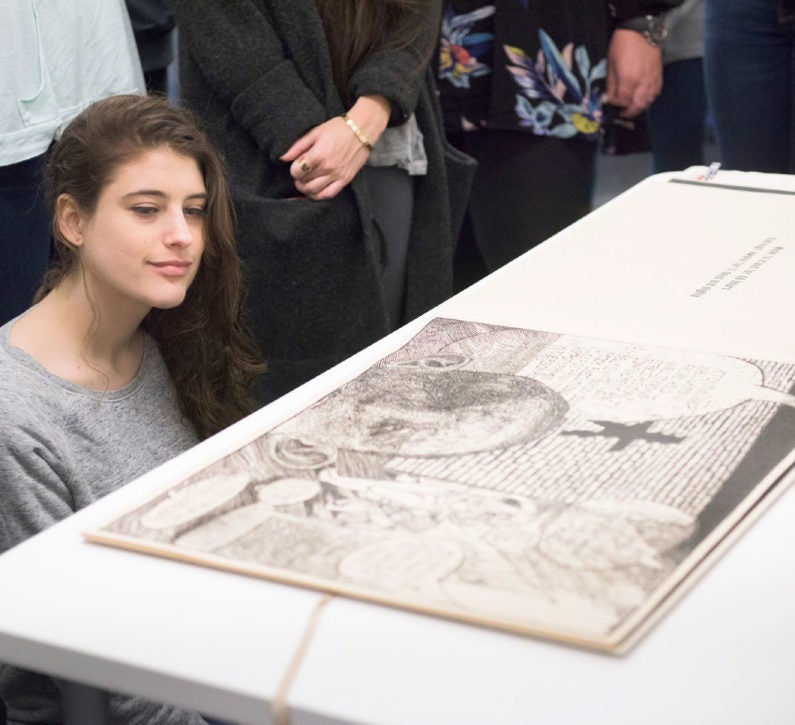
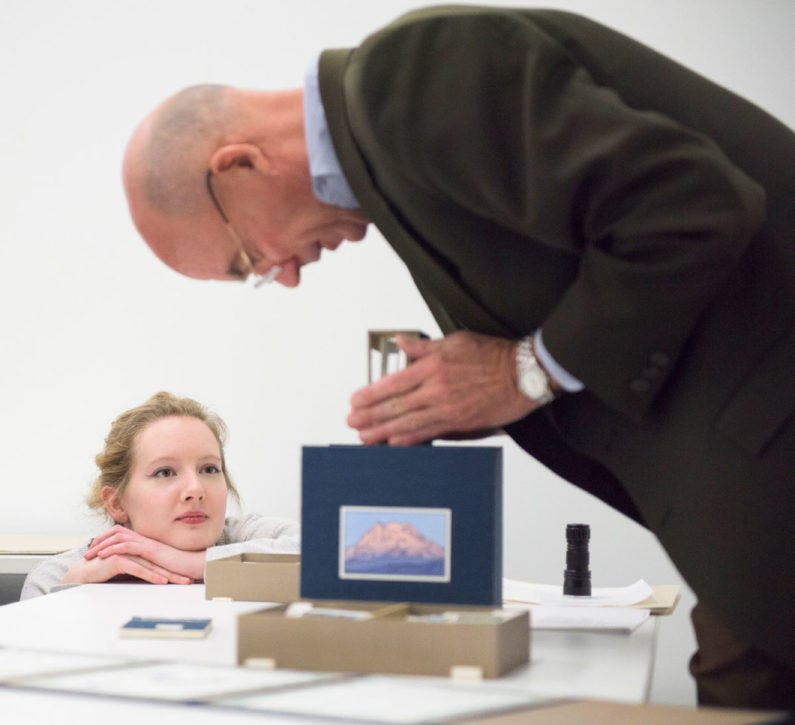
Jacqueline Langelier, a junior majoring in art practice and minoring in film & media studies, admires the detail of an etching in Cry Uncle, a 23-page accordion-fold book on torture by Frances Jetter.
“Cry Uncle is a particularly intricate work, both in craft and in meaning,” Langelier said. “Every element of the book is intentional: from the paper that feels like skin as you turn the pages, to the fabric case that is sew to resemble a face. For my honors thesis in art practice I will be creating my own series of artists’ books, so I am looking forward to exploring the library’s own collection.”
Hadley Nelson, a junior majoring in art practice, watches Blank assemble Local Conditions: One Hundred Views of Mount Rainier (At Least), by Chandler O’Leary. The artist’s book is a collection of 120 hand-colored and hand-cut letterpress cards that are stored in tiny drawers in 10-inch cube artist’s book, which also has a viewing box.
“It is inspiring to see the infinite potentiality of book as art object, and it is exciting and encouraging for me to see that there are artists out there who make books and succeed,” said Nelson. “Local Conditions is an exceptional example of craftsmanship. Can you imagine cutting out and hand painting each of those pieces?”
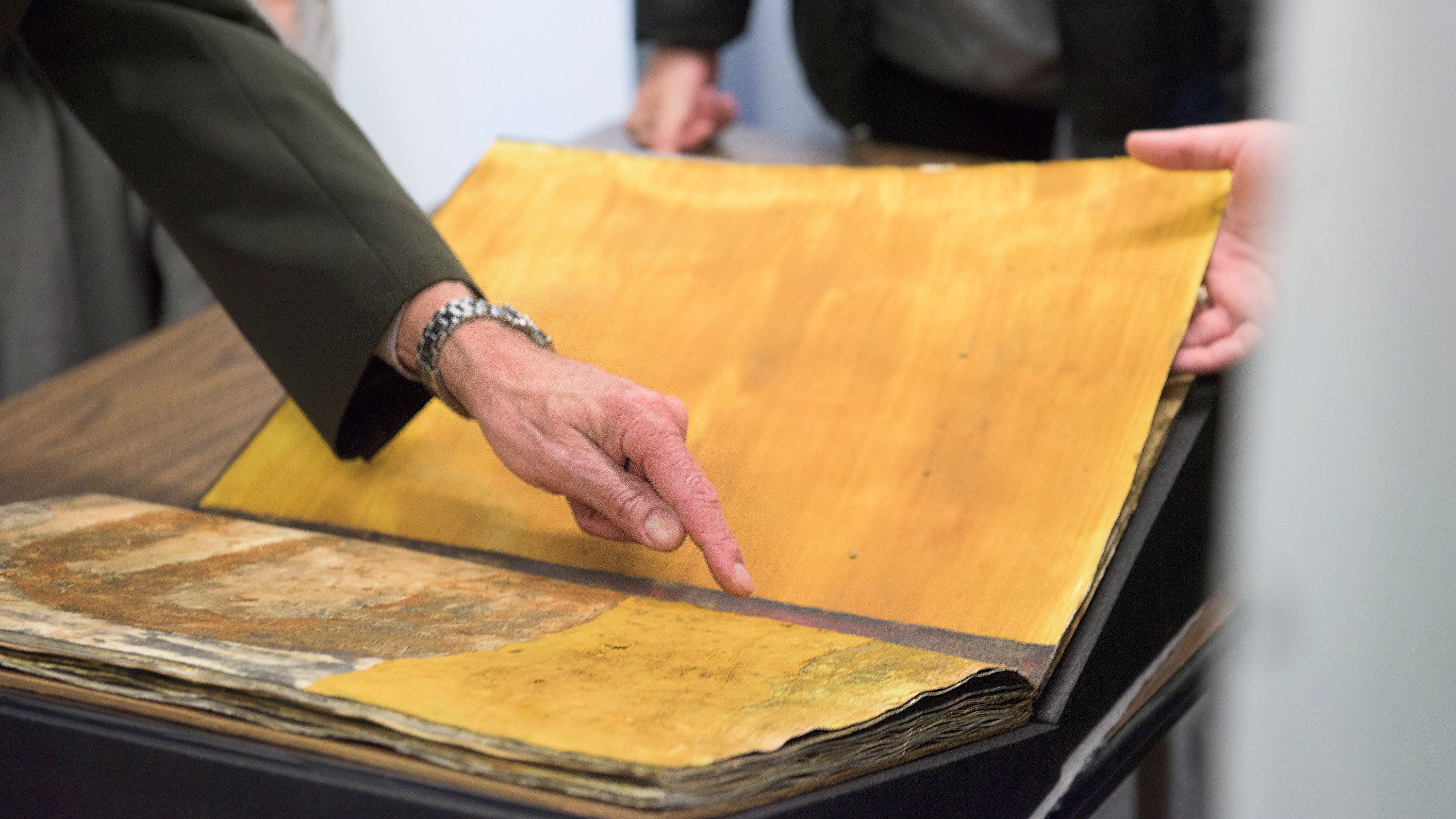
The artists who created Mars – Marshall Weber, Kurt Allerslev and Laura Smith – used burnt mustard pigment to evoke the deadly mustard gas used during World War I. The artists were inspired by evidence – from NASA’s land rover “Curiosity” – that there was organic life on Mars. The book is a meditation on Mars the planet, Mars the Roman god of war, war in general, and the battle of Gallipoli during World War I.
“I pointed out the textures and markings created by the artists, who used unique materials to create Mars,” Blank said. “I talked about how the artists created a sense of landscape, time, a moment in past history, by engaging the students’ senses of touch, smell and vision to take them to a new level of experience, to a new kind of encounter with the book.”
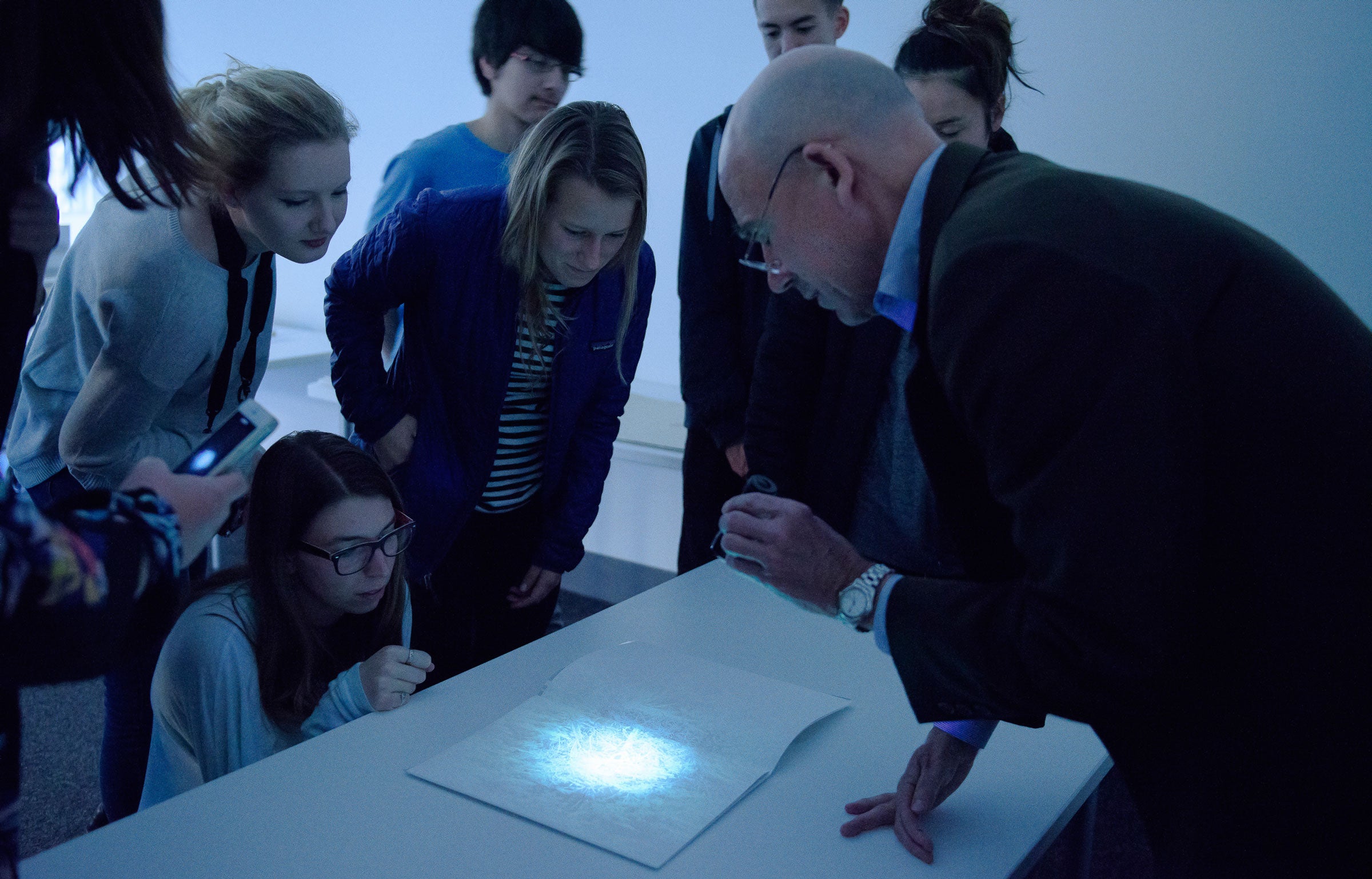
Another treasure in the library’s special collections is 2013, by Justin James Reed. The book comes with a UV flashlight. Its pages, which appear white, were printed with experimental ultraviolet “Firefly” ink, which is invisible in normal spectrum light, but appears lush and ghostly under ultraviolet light.
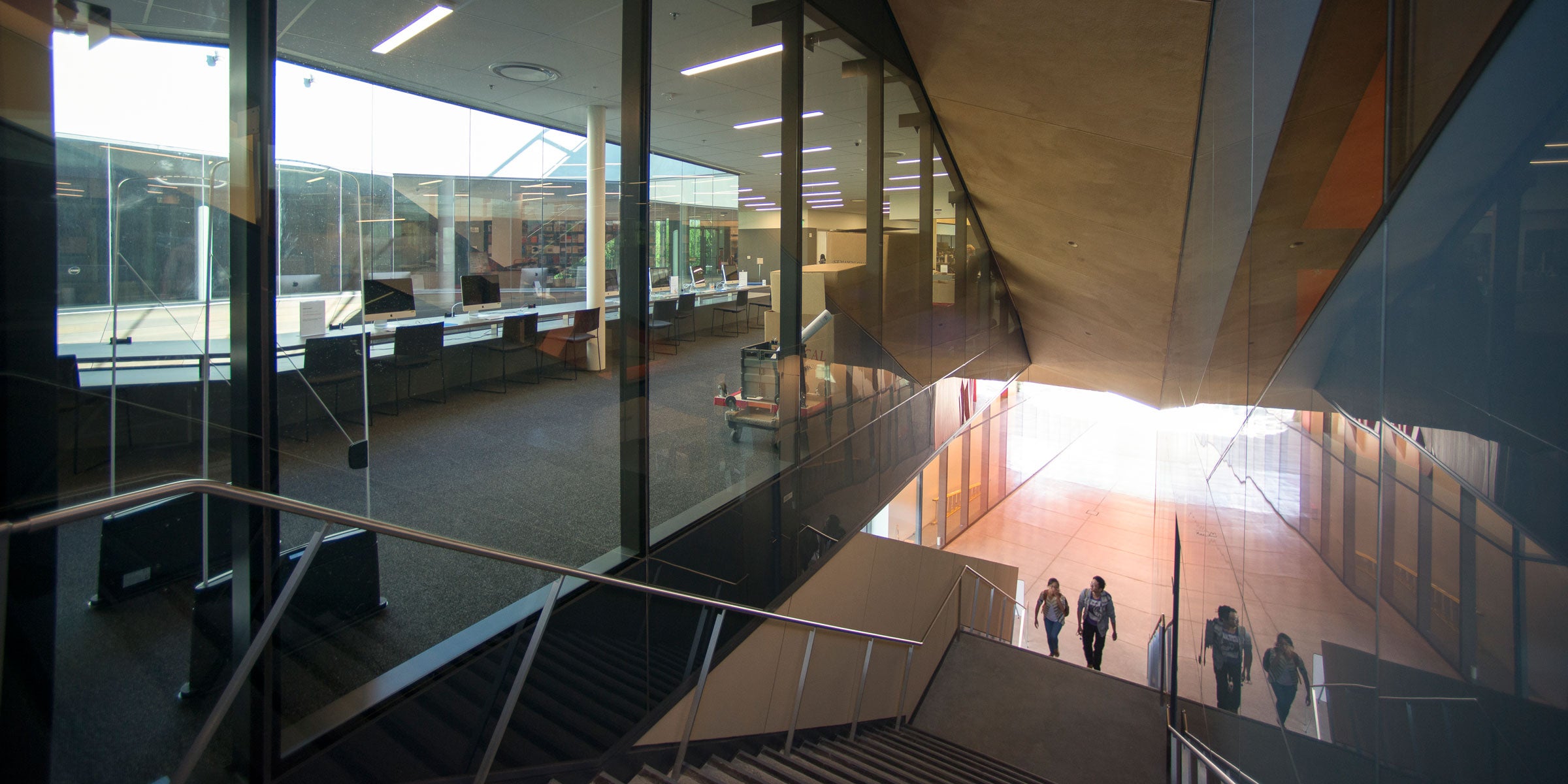
To enter through the west entrance of Bowes Library, climb the stairs from the courtyard to the landing on the second level.
For hours, check the Bowes website. The library supports art-related research, teaching, exploration and discovery; it is open to all Stanford students, faculty and staff, and registered visitors.
Story Credits
Writer: Kathleen J. Sullivan
Photography: L.A. Cicero
Design / Art Direction: Kevin Garcia
